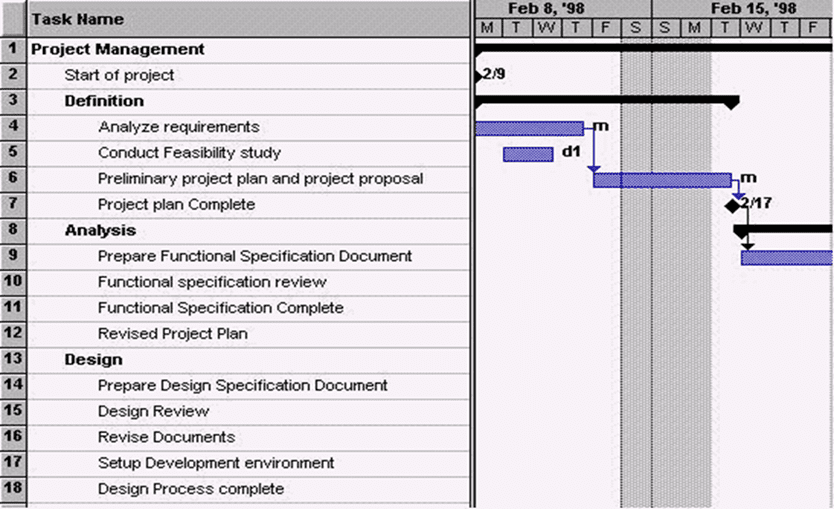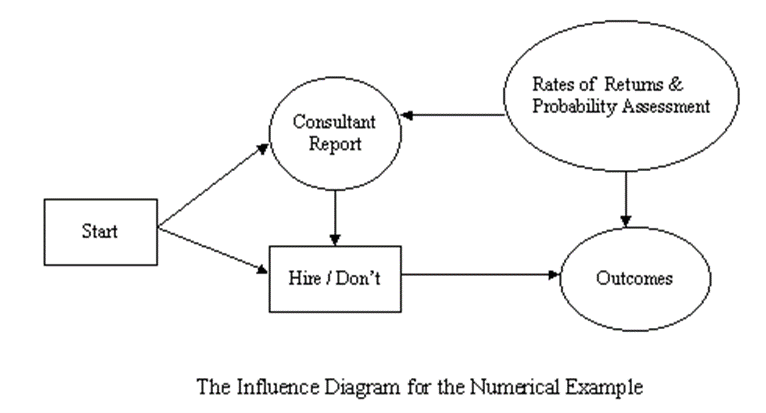Abstract
Critical path analysis (CPA) calls for outlining every crucial activity required for a project’s successful completion as a project management method. Dictates the time required to complete each task, as well as any interdependencies between tasks. These methods have been around since the mid-1950s and are now utilized almost universally in project management. It uses a graphic with circles representing different project elements and lines indicating the activities that connect them. The critical path analysis represents the shortest possible time for a project, equal to the sum of all the individual activity periods on all possible paths from the beginning to the end. Recent research has focused on making the greatest use of limited resources throughout a project, and both academics and project managers have put much effort into this area. Project schedulers and managers in the real world have different needs than those found in published theoretical work.
Keywords: Project Management, Critical path analysis, Computers, Resource Allocations.
Critical Path Analysis (CPA)
Critical path analysis entails drafting out every vital task essential in project completion. It includes the identification of specific times each activity requires, including their dependencies on each other. It also tracks the project process all through to the end by setting a realistic deadline. In planning and rational management of projects, CPA is considered key. Comprising an activity plan from the start until its termination, CPA identifies the order of vital and interdependent steps, including non-critical tasks.
Critically Examine the Advantages and Disadvantages of Using The CPA/CPM In A Project
Advantages
CPA offers the following advantages
- Identification of activities of a project that can run parallel to each other
- Aids in identification of project critical elements identification
- It helps determine the objectives by providing a practical and disciplined basis (Lee and Shvetsova, 2019).
- It has proven effectiveness in new project management, and if applied properly, it strengthens team perception.
- Enhances specific activity scheduling through demonstration of dependencies
- As a network diagram, through fair and precise documentation procedure for the project, it indicated different tasks and possible outcomes.
Disadvantages
- It can be complicated for recruits to a project team to follow in case of bigger projects.
- Difficulty in management and ineffective if not well defined and unstable
- In case of a midway change of plan, it is hard to restructure the whole CPM chart. Therefore, difficult to handle unplanned modification in its implementation (Zareei, 2018).
- The daily activities of the individuals involved in the project cannot be formed or controlled.
- Difficulty in monitoring resource allocation
- It is time-consuming since much time is required to calculate the CPA critical path carefully and difficult to determine in cases of similar duration paths.
Show Giving Examples How IT/MIS Tools Can Be Used to More Efficiently Do
As a challenging task, project management has very complex responsibilities. However, it is fortunate that there are available tools that help accomplish and execute these tasks. Some are operated manually; others require a computer with supporting software (Bhosale et al.,2017). The choice of a management tool should depend on the management style used in the project. Different tools address different management needs (Soe and Htike, 2018). The most commonly used management tools are the Gantt charts and the Program Evaluation Review Technique (PERT), and both can be produced manually or with management software.
Gantt Chart
The daily, weekly, and monthly assignments are usually displayed on the Gantt chart. The start, elapsed, and completion times of every activity within a project are shown by graphic representation. Gantt charts effectively track the process and help target potential timeline slippage and failure points (Nguyen et al.,2018). It is also a budgeting tool indicating the amount spent versus allocated and allows for negotiations.
Figure 1
An image showing a sample Gantt chart (Nguyen et al.,2018)
Expected money value(EMV)
Explain What Is Expected Value With Perfect Information
Expected value with perfect information is the price a person pays to receive perfect information on a project they are working on or a new project (Boncompte, 2018). It tries to measure the expected cost of the uncertainty eliminating the possibility of making the wrong decision.
Explain What Is Expected Value Without Perfect Information
It is the price a project manager or any person willingly pays for accessing any information they require without being keen on the type of information available. In this case, there is a high possibility of making the wrong decision in particular uncertainties.
Critically Examine If EVPI Is Important to Help Project Managers Make Decisions
As It Pertains to Their Project Environment
Indecision theory, EVPI is an important tool mainly in health economics. For instance, there must be some uncertainty about a new treatment or method since there are chances for a wrong decision. Therefore, EVPI reduces the possibility of a wrong decision. In addition to aiding in forecasted offer decision-making by providing criteria to identify imperfectly informed ordinary forecasters, it aids in rejecting costly proposals (Zang et al.,2020). If the outcome is clear in making a decision, EVPI determines how best the decision-maker could do.
Show Using Examples How IT/MIS Tools Can Be Used to Make This EMV Analysis More Efficient
Different tools aid the ineffectiveness of the expected monetary value of various projects, including a graphical representation of decision trees and influence diagrams.
Figure 2
An image of an influence diagram (Khalilabadi et al.,2020).
In the diagram above, the circles and squares indicate the decision and chance nodes with arrows and arcs indicating relationships such as probability ones (Khalilabadi et al.,2020). Ineffective decision making, the decision tree and influence diagram above allows full analysis of possible consequences of a decision, lays out a problem allowing all positions to be challenged, quantifies possible outcomes and the probability of achieving them, and based on pre-existing data and best guesses, we can make best decisions.
Resource Optimization
Critically Examine the Differences and Similarities Between Resource Levelling and Resource Smoothing
Differences
- In resource smoothing, the final dates for the project never alter while that of resource leveling can change.
- In resource smoothing, there is no change in the critical path, but activities can be delayed. However, resource leveling critical path changes generally by increasing.
- In resource smoothing, the final project date is a constrain used for unevenly distributed resources. In contrast, resource leveling is used during under or over-allocation of resources, and its main constraint is the resources (Lanzanova et al.,2019).
Similarities
- Both techniques help in the optimization of resource usage.
- Both assist in the network analysis schedule.
Explain The Importance of Resource Levelling and Resource Smoothing in Project Management
A shift in the project environment that influences resource levels requires resource-leveling. Resource leveling is important since it eliminates over allocation, improves productivity, minimizes burnout, and enhances quality output (Lanzanova et al.,2019). On the other hand, resource smoothing ensures that the predefined resource limits during planning are maintained by adjusting the activities of a schedule model (Olivieri et al.,2018). Resource smoothing aims after tasks within stipulated timelines and avoids peaks or increases in resource demands.
Show Using Examples How IT/MIS Tools Can Be Used to Do These More Efficiently
Intelligent support systems (ISS) require the use of expertise, intuition, knowledge, and experience in facilitating decision-making (Abdel-Basset et al.,2020). These types of systems include expert systems (ES), artificial intelligence (AI), decision support systems (DSS), and executive information systems (EIS).
Executive Information Systems (EIS)
These systems provide detailed information for strategic decisions and are customized for individual executives (El-Sayegh, 2018). For instance, a CEO’s EIS may entail graphs of current economic and industry trends and spreadsheets indicating current financial data comparisons to their main competitors.
Conclusion
In conclusion, in any project planning stage, it is essential to include a critical path analysis. It allows flexibility to float activities and precise completion dates of the entire project. In refining task periods and duration predictions for the whole project, there is a need to constantly update factual information on the critical path diagram for the project in progress. Additionally, project managers should employ precise tools in decision-making with the correct information to minimize the chances of bad decision-making. Resource leveling and resource smoothing are also essential in ensuring proper use and allocation of available resources, increasing productivity, and enhancing time management.








